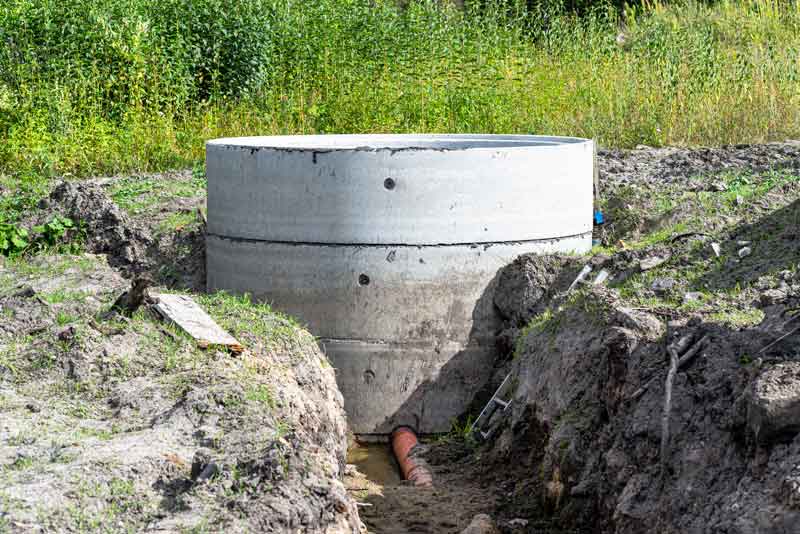
When it comes to septic systems, the septic tank is the unsung hero. It quietly performs the vital task of treating wastewater from your home, ensuring a safe and clean environment. However, selecting the right septic tank is a decision that should not be taken lightly. In this guide, we’ll explore the key factors to consider when choosing a septic tank and provide valuable installation tips to ensure its long-term efficiency.
Tank Material
Septic tanks are commonly made of three materials: concrete, fiberglass, and plastic (polyethylene). Each has its own set of advantages and considerations:
- Concrete: Durable and long-lasting, concrete tanks are often preferred for their longevity. However, they can be heavier and more challenging to install. Hiring a professional contractor such as Grounds One of Toledo can make this installation much smoother.
- Fiberglass: Lightweight and resistant to corrosion, fiberglass tanks are a good option for some situations. They are less prone to cracking than concrete tanks.
- Plastic (Polyethylene): Lightweight and easy to handle, plastic tanks are becoming increasingly popular. They are resistant to rust and corrosion, making them a durable choice.
Your choice of material should depend on factors such as soil conditions, local regulations, and your budget. Consulting with the professionals at Grounds One can make understanding these factors easier and help determine which is right for you.
Tank Size
The size of your septic tank depends on the size of your household and the estimated wastewater flow. Undersizing the tank can lead to frequent pumping and potential system issues, while oversizing can increase costs unnecessarily. A professional septic system designer can help you determine the appropriate tank size for your needs.
Installation Location
Proper placement of the septic tank is crucial. It should be installed in an area with good drainage, away from trees and large shrubs whose roots can invade the tank. Ensure that it meets local setback regulations from wells, property lines, and water bodies.
Inlet and Outlet Design
Consider the design of the inlet and outlet baffles. Well-designed baffles prevent solids from flowing into the drain field, ensuring efficient wastewater treatment. Discuss baffle options with your installer to ensure they match the specific needs of your system.
Maintenance Accessibility
Easy access for maintenance is vital. Be sure to install risers and lids that are at or above ground level. This makes regular inspections, pumping, and maintenance tasks more straightforward and cost-effective.
Local Regulations and Codes
Always adhere to local regulations and codes governing septic tank installations. Failing to do so can result in costly fines and system issues down the road. Work with a licensed installer who is knowledgeable about local requirements such as Grounds One.
Installation Tips
- Professional Installation with Grounds One: Hire a qualified and experienced septic system installer. Proper installation is key to the long-term success of your septic tank.
- Soil Testing: Conduct a thorough soil test to ensure the chosen location is suitable for a septic system. Soil composition can significantly impact system performance. Grounds One can help with this as well!
- Regular Maintenance: Develop a routine maintenance schedule that includes periodic inspections, pumping when necessary, and addressing any issues promptly.
- Water Conservation: Implement water-saving measures in your home to reduce the load on the septic system. Fix leaks and avoid excessive water usage.
- Septic System Additives: Use septic system additives only if recommended by a professional. Misuse of additives can harm the system.
Choosing the right septic tank is a significant decision for homeowners. It’s an investment in the long-term health and functionality of your septic system. By considering these factors and following proper installation and maintenance guidelines, you can ensure your tank serves your household efficiently and effectively for many years to come.
